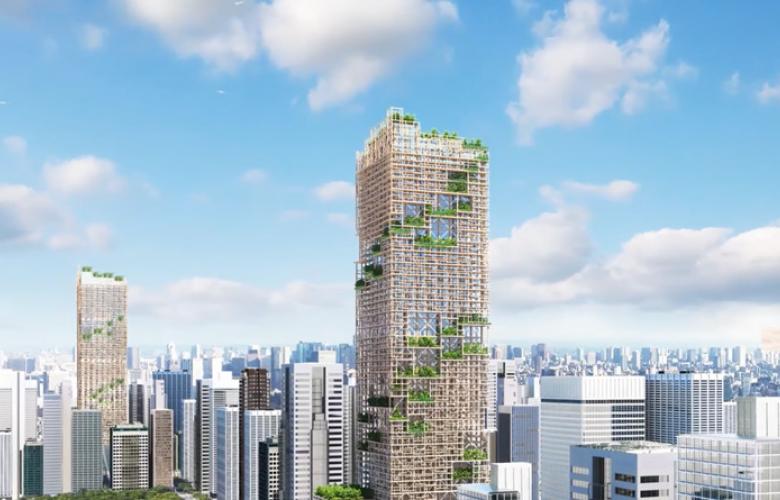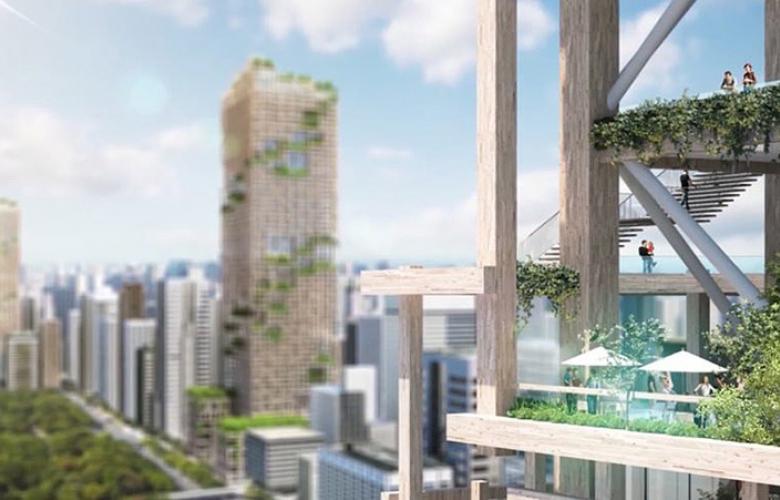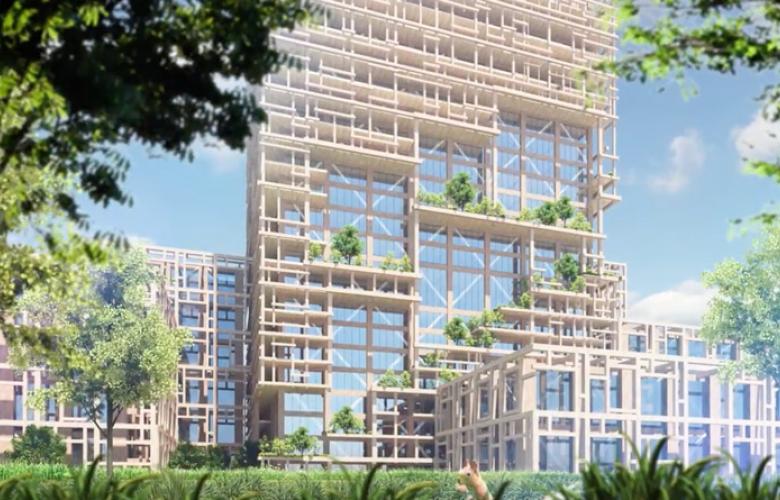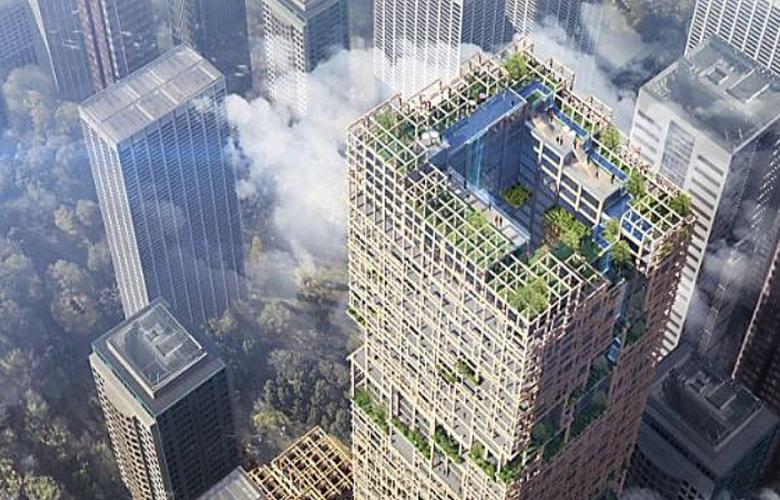Tokyo plans world's tallest wooden skyscraper by 2041
Contact
Tokyo plans world's tallest wooden skyscraper by 2041
Japanese developer Sumitomo Forestry has joined forces with architectural designers Nikken Sekkei, announcing plans for the world’s tallest wooden skyscraper.
The timber skyscraper forms part of the W350 project, a mixed use environmentally friendly development whose completion will mark Sumitomo‘s 350th anniversary. the concept has been prepared by Sumitomo's Tsukuba research institute which the company hopes will help ‘transform the city into a forest’.
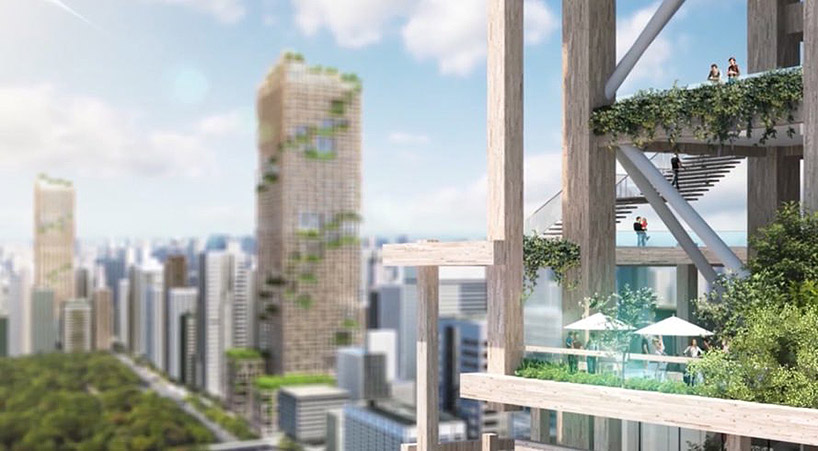
Image Source: Sumitomo
The plan will see 70 storeys comprising of steel and timber covering 6,500 square meters and 455,000 square meters in floor space. 6.5 million cubic feet of wood will be required to realise the braced tube structure designed in collaboration with architectural designers Nikken Sekkei. Braced tubing summarises a structural system strengthened by inserting elements into the incorporated framework to prevent any damage caused by conditions brought on by earthquakes or just simply wind.
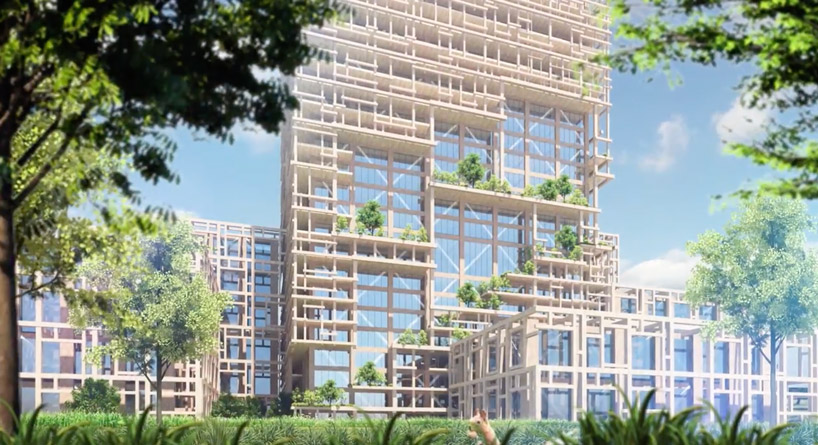
Image Source: Sumitomo
Renderings of the W350 project show timber buildings covered in greenery that according to Sumitomo will be built to withstand earthquakes and fires – with what resistance and for how long is not yet public knowledge. The completed tower will house shops, offices, a hotel and residential units, whilst sketches show balconies wrapped around the entire facade.
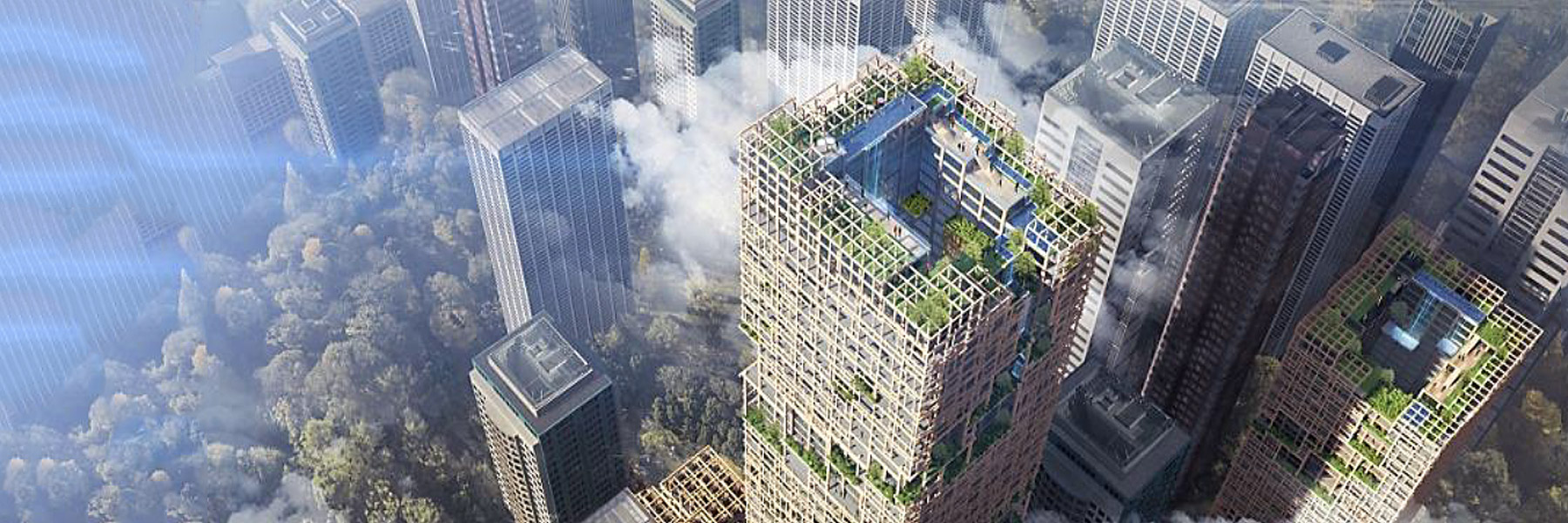
Image Source: Sumitomo
Once completed the building will not only outstrip Abeno Harukas in Osaka, which currently holds the crown as Japan’s tallest building it will be the tallest timber tower in the world. in doing so the company hopes that the project will popularize timber architecture and help jumpstart a revitalization of the forestry industry in rural areas and interest in reforestation.
For more information on this project and others designed by Nikken Sekkei email or visit their website via the contact details below.
Sources: Sumitomo Forestry, Dezeen, Nikken Sekkei
Similar to this:
"House where shade rests" (층층나무집) by studio_GAON architects
Honoring the natural landscape, traditional Mongolian architecture and using local materials HDD's yurt-like visitor center is a must see!





